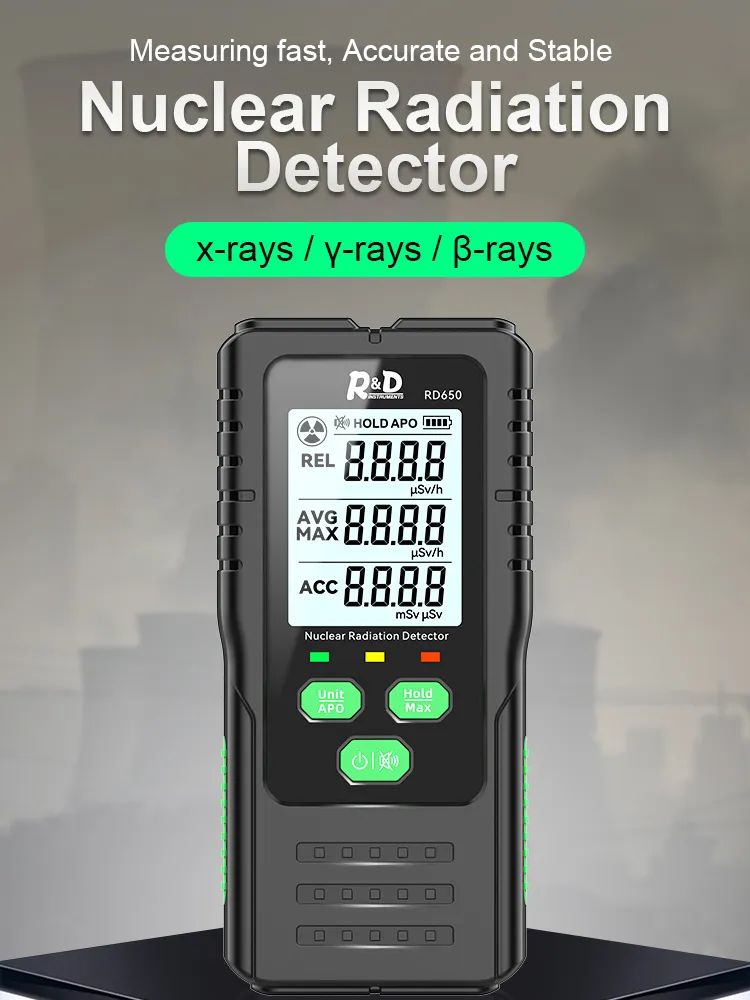
Radex Geiger Counter
- Triple Field Radiation Detector
- 3 Radiation Detector Meters in 1
- Personal Radiation Detector
- Geiger Muller Counter Technology
- Nuclear Radiation Detector
- Good Geiger Counter HD Display
- 2 Year Warranty ◊ Free Delivery
$89.95
Watch The Promo Video For The Radex Geiger Counter
In this post I want to describe how a Geiger muller counter works
A Geiger muller counter can be used to measure radioactive radiation and below I will demonstrate visually, so you can see the structure of the device. A gas is located in a metal cylinder in the middle of the metal cylinder, where there is a positively charged wire. And the outside wall of the cylinder is negatively charged, and this would be where the radioactive radiation would begin the process of being measured.
Let us assume that radiation, as an electron, flies through this very thin window, into the Geiger Müller counter cylinder and then hits a noble gas atom and then, knocks an electron of this atom out of the atomic shell. Both electrons are strongly attracted to the positively charged wire after the collision, on the way to the wire, while the incoming electrons collide with other electrons from the other normal gas atoms, these are also knocked out of the atomic shell of the atoms, as this leads to what is known as an electron avalanche, so that many electrons will reach the wire. The now positively charged noble gas atoms are attracted to the negatively charged cylinder wall where they recombine with electrons, so that they are neutrally charged again, while the electrons in the wire now flow to the positive pole of the connected power supply unit.
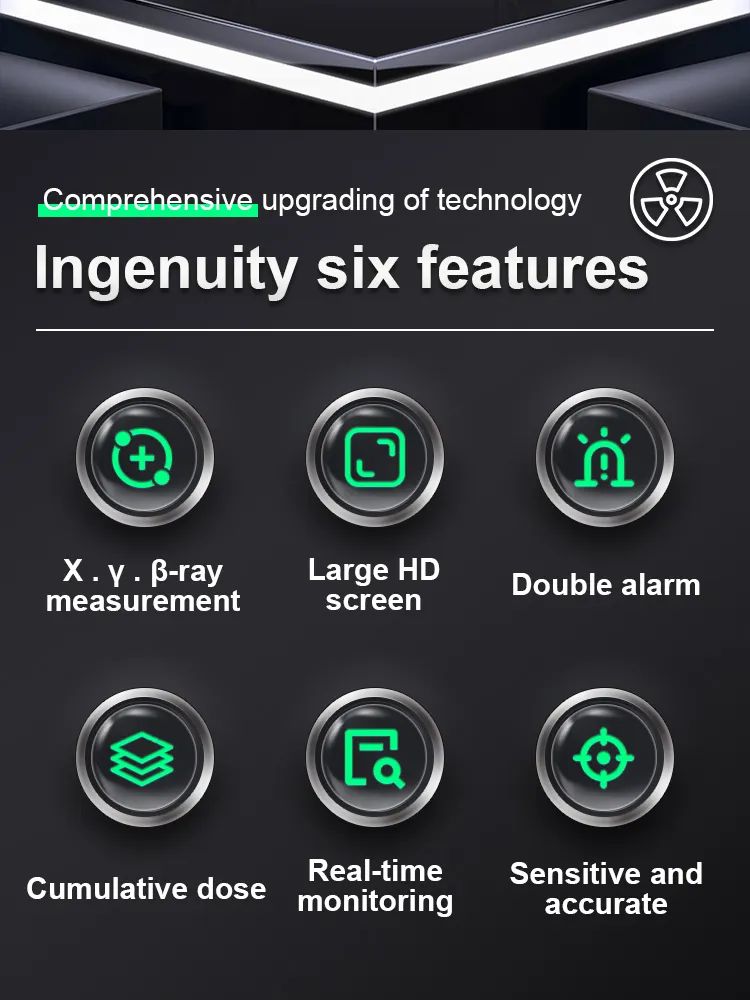
You can get to the positive pole in two possible ways, once through the very large resistor and once through the Geiger Müller counter, since the resistance is very high, most of the electrons flow through the counter and the Geiger Müller Counter registers the current poles and will now display the registered value of 1 (one). Radex Geiger counters uses the Geiger Mueller tube method of radiation detection in the manufacturing of its Geiger counters because of the need to maintain a higher radiation detector accuracy and a higher sensitivity range of radiation detection. The Geiger Mueller counter tube is considered to be the preferred gold standard when producing a higher quality Geiger counter.
This is where I demonstrate how I use a Geigermeter
A Radex Geiger Counter can read many dangerous levels of radiation. You might want to consider something like this for yourself as well, if you’re looking for a geiger meter for sale. But I’ll give examples of why they may be useful to you and then a little bit more detail about each one of their various features. Later on in the post, I will give a suggestion for you on how to figure out where to go should you hear that there’s some radiation or fallout heading your way. In 2011 Japan experienced three nuclear meltdowns, three hydrogen explosions and a release of radioactive contamination from their Fukushima nuclear power plant which was caused from an earthquake and tsunami. If you were there at the time, it would have been nice to of had, a Geiger counter, to help to get to a safe location. I’ve recently read that there are over 400 active nuclear power plants worldwide and for the most part they have had a fairly good safety record. However there have been accidents and I believe it could be a potential target for future problems, and if you live near one, you might want to consider buying a geiger counter or at least take a closer look, the next time you see a geiger counter for sale.
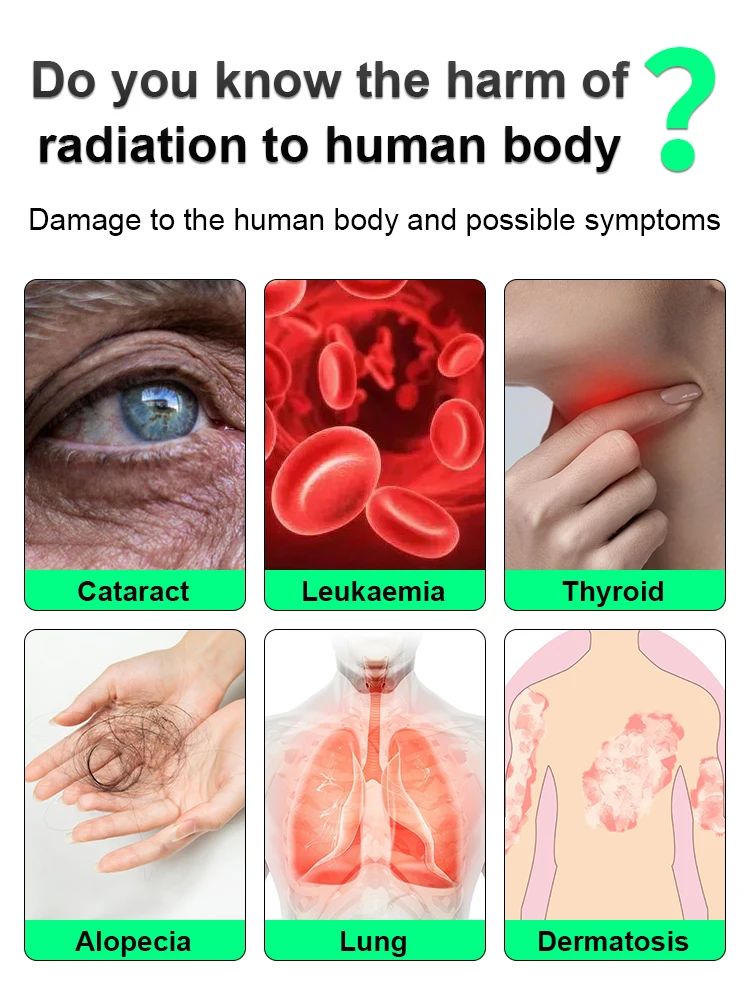
Later on in this post, I will give a suggestion for you on how to figure out where to go, should you hear that there’s some radiation or fallout heading your way. In 2011 Japan experienced three nuclear meltdowns, three hydrogen explosions and a release of radioactive contamination from their Fukushima nuclear power plant, which was caused from an earthquake and tsunami. If you were there at the time, it would have been nice to of had a Geiger counter, to help to get to a safe location.
The following is not exactly the latest breaking News story; since most people in the United States already know that people from all over the world have entered into the United States illegally from the southern border, as they have been doing that for many years and still do. It’s not that far-fetched to assume that many bad people with bad intentions, have also gotten in. And when you combine that with the fact, that you can put a nuclear device or material in a backpack, makes that situation very dangerous and that’s another reason why it might be a good idea to have a Geiger counter just in case there’s some type of unforeseen situation that involves nuclear radiation being released.
And do you think that, having a geiger counter could be useful in a nuclear situation? Well I know that is way too hard to answer because, there’s too many variables, since an attack from Russia would be much different than an attack from North Korea. For example just because of the sheer number of missiles, but let’s just say for a second that you’re able to survive the flash and you don’t look and you’re not near the blast or the fire or heat or debris, and that you’re able to get to some kind of a shelter preferably like a basement with thick concrete walls or something similar. In that case it would be probably helpful because you can find out if it’s safe there and then later, you can find out when it’s safe to leave your shelter.
Why are Geiger Counters considered essential must have devices?
- Natural disasters, industrial accidents, or nuclear attacks can all trigger radioactive fallout contamination and having a reliable Geiger counter is essential
- Monitoring background radiation and the sudden surges in ambient radiation which could signal dangers like a nuclear plant meltdown
- Contaminants in consumables could have catastrophic health consequences and a Geiger counter helps screen for tainted resources. Routine Geiger counter monitoring ensures detection of threats at the early stages of radiation in water, soil, and food
- Equally important and many times overlooked is identifying safe evacuation routes. Because after a disaster like Fukushima, radiation mapping was the key element for guiding citizens away from the radiation hot zones
- Geiger counters enable similar navigation and helps to avoid radioactive hot spots, considering during nuclear fallout, particles can concentrate unpredictably
- Portable radiation detectors allow you to assess dangers on-the-go and to avoid radioactively “hot” zones or areas
Investing in a durable and precise Geiger counter does help empower people to measure, adapt, and respond to rapidly evolving radiation threats. As an essential survival tool, radiation detectors deserve a place in everyone’s emergency kit.
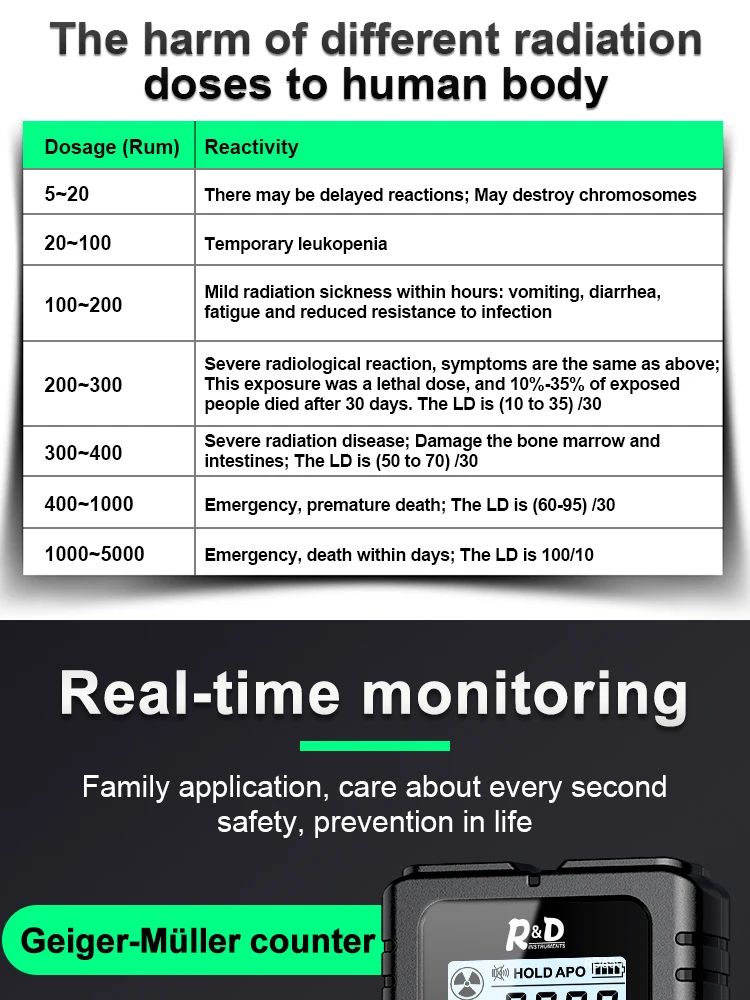
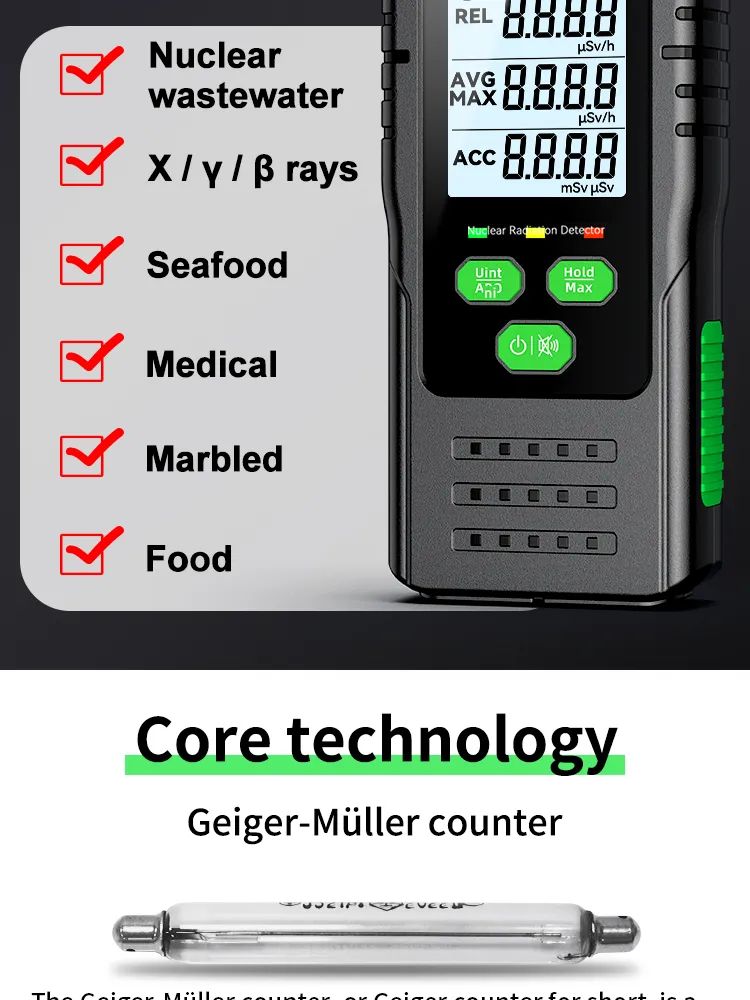
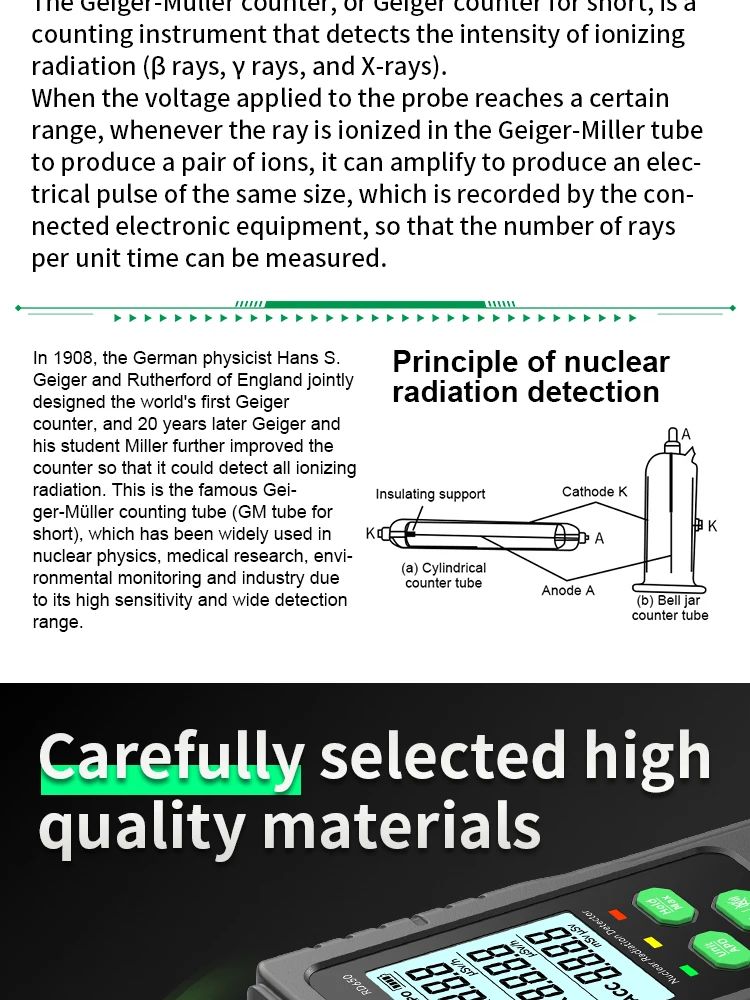
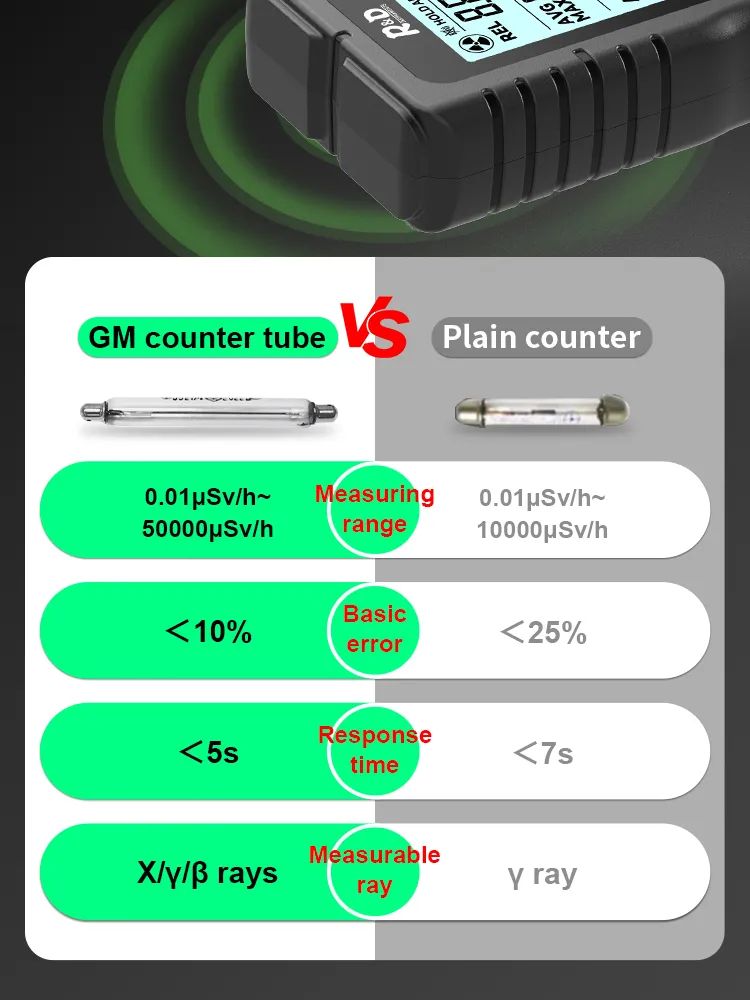
Other Considerations of a Geiger Muller
Many people will overlook the fact that a nuclear related event can also have an EMP effect on some areas of the ambient environment, which can potentially interfere or burn out electronic and electrical components in some electronic devices as well as your Geiger counter. Anyway my Geiger counter is called a Radex Geiger Counter and they make other models as well. But, I paid about $100 bucks for it, maybe $125 or so back in 2015. There are a lot of reviews on this device and in fact testing it, is done with actual radioactive material to test the effectiveness and sensitivity of the radiation detector. So after much field practice and testing, I’m convinced that the Radex radiation meter, is accurate and very reliable.
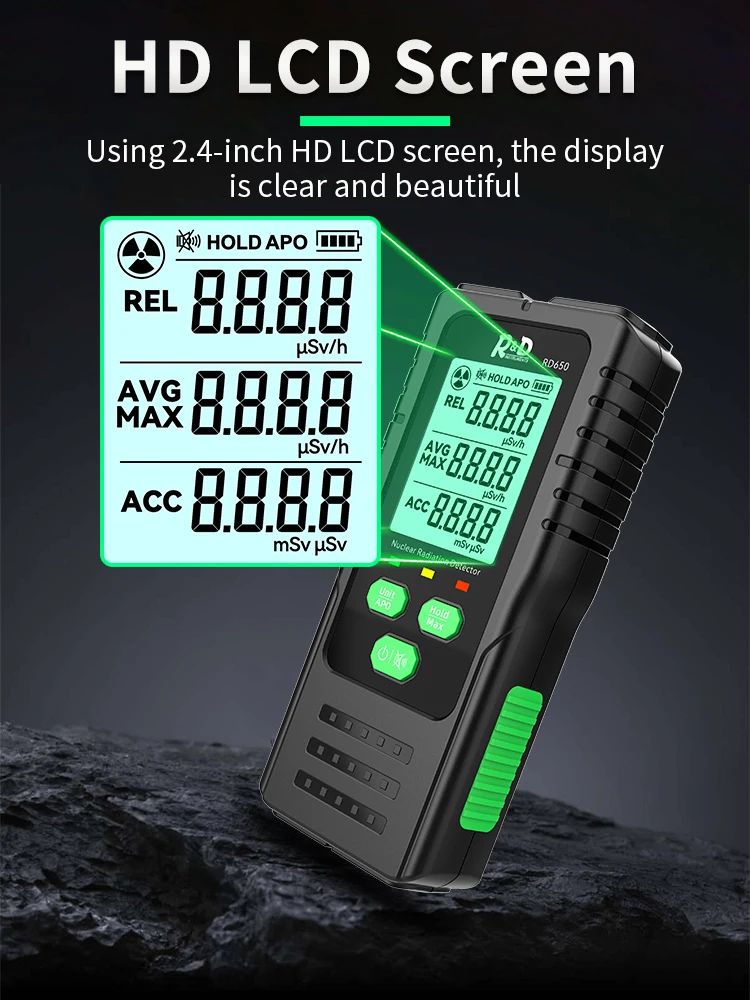
The Radex Geiger Counter will detect background radiation and uses a data logger and also features automatic data recording to continually monitor potential radiation and log the data into internal memory to play it back later. You can also download that data to or from a pc and even upload the data to a Geiger counter world map where readings and data collected from other Map users around the world are being displayed. The Radex Geiger Counter will also detect the background radiation numbers, just look at the numbers and compare the cpm number, which should be in a low normal range of maybe a 25 to 35 range, which can be a normal reading right now. But the reading indicator can go all the way to greater than 2000, which is extremely high and will indicate evacuate immediately.
The Radex radiation tester also comes with a pretty handy carry and storage case. With lots of thick padding in it and it almost seems like this was custom made for my Radex Geiger Counter. Some devices have additional Apps such as a Wind App. If some kind of nuclear disaster occurred and there may be some kind of fallout or radiation from it, the wind app might be a useful tool for a phone, assuming your phone works and the wind direction is blowing from the south to the north. If something happened in the south and I live in the north, I might want to travel east or west to get away from the fallout. The app can show wind direction worldwide, as well if something happened in another country you might want to be aware of and which direction the fallout is heading. And as always, it’s always a good idea to prepare ahead of time.
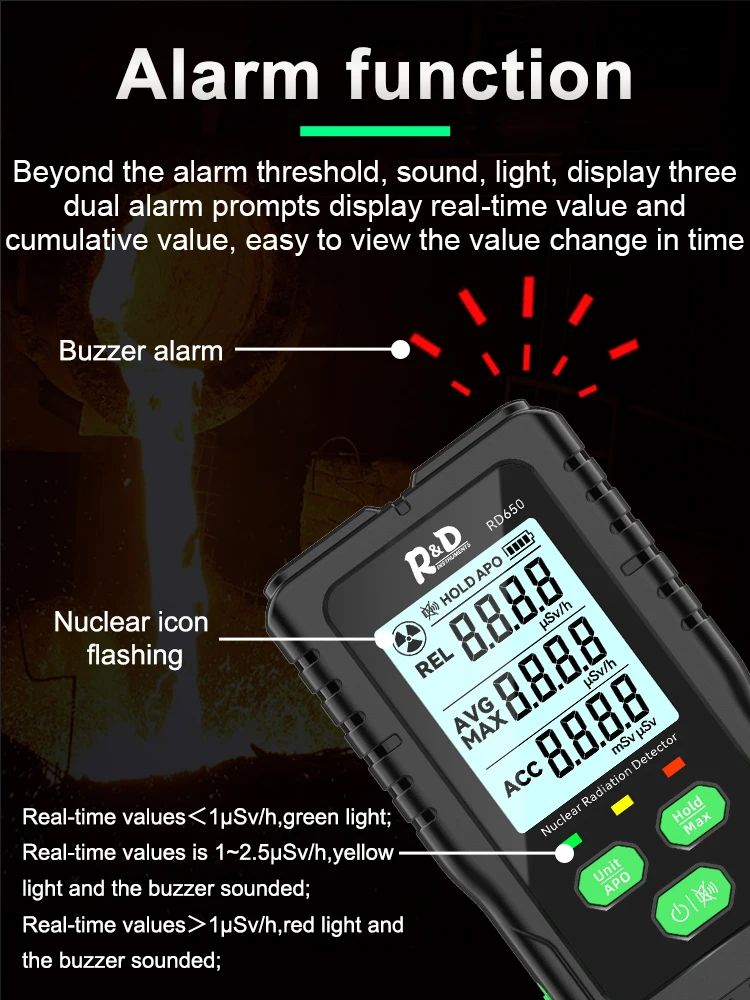
Now it’s time for us to explore and dive a little deeper into our topic of the Muller Counter aka Radiation Detector
Geiger Muller or GM counters are one of a class of gas-filled radiation detectors that operate by using the ionizing nature of alpha beta and gamma radiation. Neutron sensitive devices can also be produced typically by introducing Boron, which interacts with the neutrons to produce secondary ionizing particles that trigger the count response. The GM tube is a sealed metal cylinder containing a low pressure inert gas such as argon or neon a thin metal wire runs down the center of the tube which is electrically insulated from the outer cylinder at the rear of the tube. The front of the tube is sealed with a radiation window that is specific to the typical radiation to be detected by the counter for example a thin micro window is used if the tube is to be sensitive to alpha particles and low energy heat particles both of which have low penetrating power.
Focus on the many prominent features of a good quality Geiger counter such as some of the below attributes:
- Triple field radiation detector
- Radiation detection portability
- Personal radiation detector
- Nuclear radiation detection ability
- Geiger muller counter portability
- Good Geiger counter HD display
- Warranty period can be a indicator of good quality
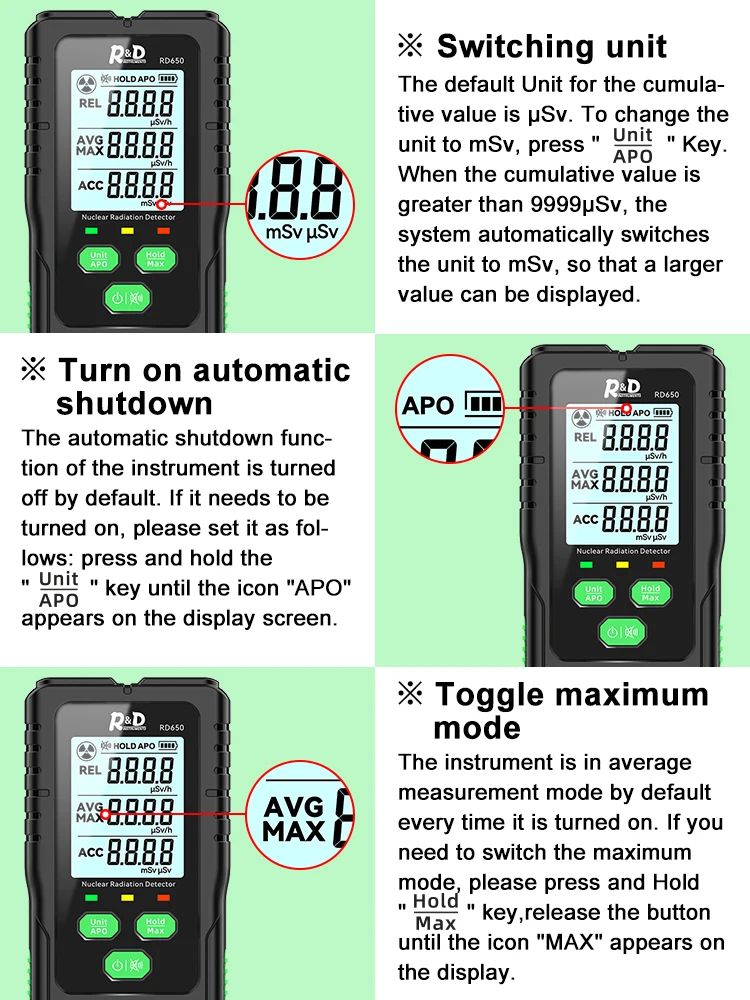
A thicker window or a different material such as glass or a thin sheet of metal is used for high energy beta particles while for gamma rays, the tube is often sealed without a window in such tubes the detection occurs when the high energy photons liberate electrons from the tube’s outer wall. The inner wire and the outer cylinder are maintained at a potential difference of about one kilovolt and in the absence of radiation. No current can flow through the inert gas between the central anode and the outer cathode. The connections are made via wires into a connecting housing that fits over the rear of the tube. An altitude guard will typically screw onto this to protect the actual GM tube. This tube guard can be open at the end or be covered by an end cap energy filter to change the energy and particle sensitivity of the device, or if a carefully calibrated design is used to allow for ambient dose measurements, rather than ambient count measurements to be made. The wires connect the tube, to the control, which perform the counting operations of the radiation detector device, and provide other functions such as conversion from Counts, to dose data.
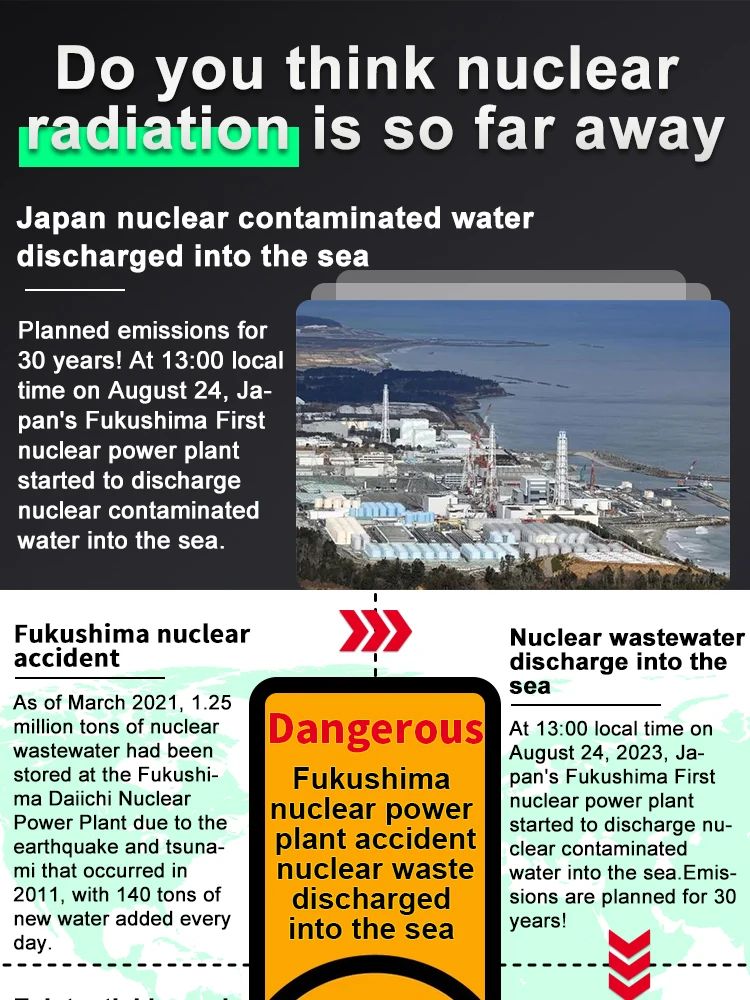
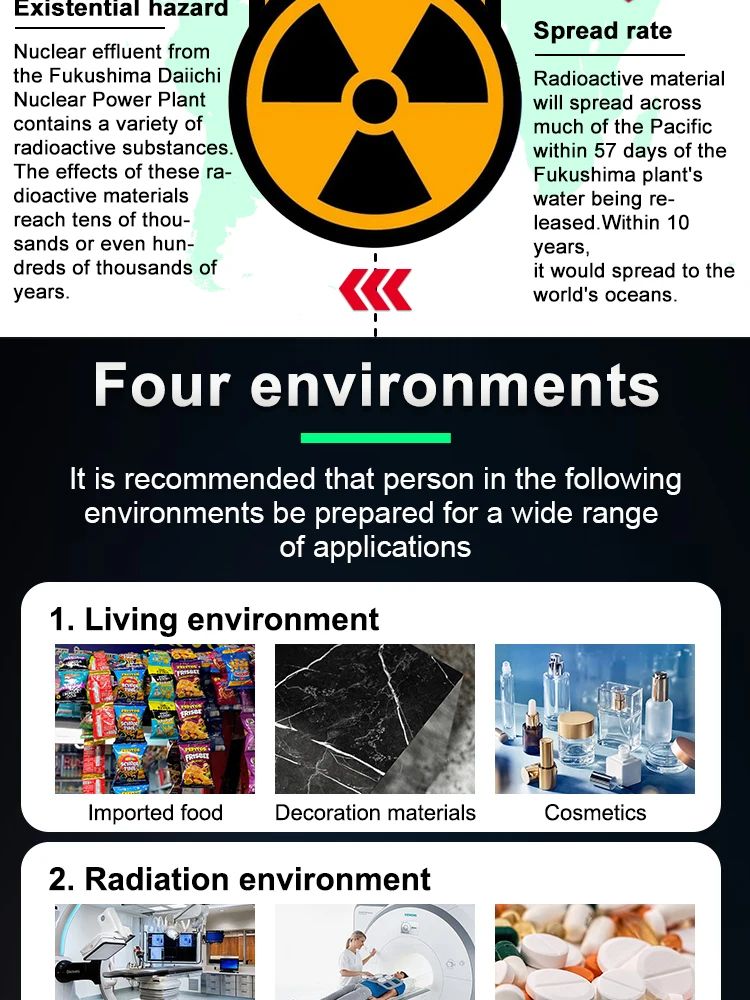


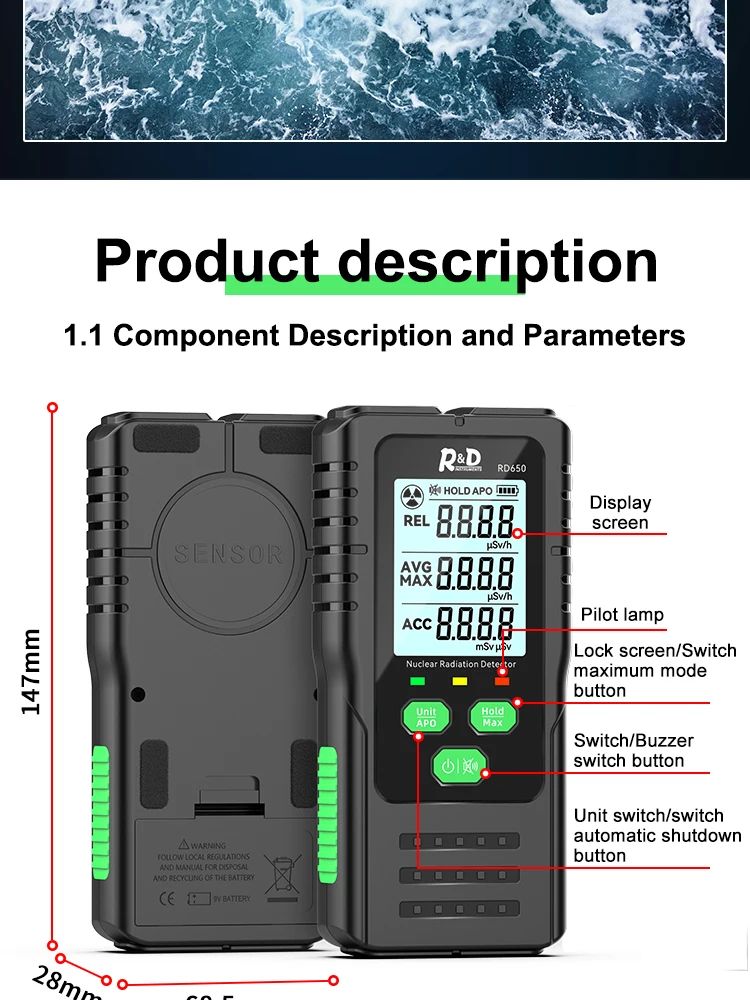
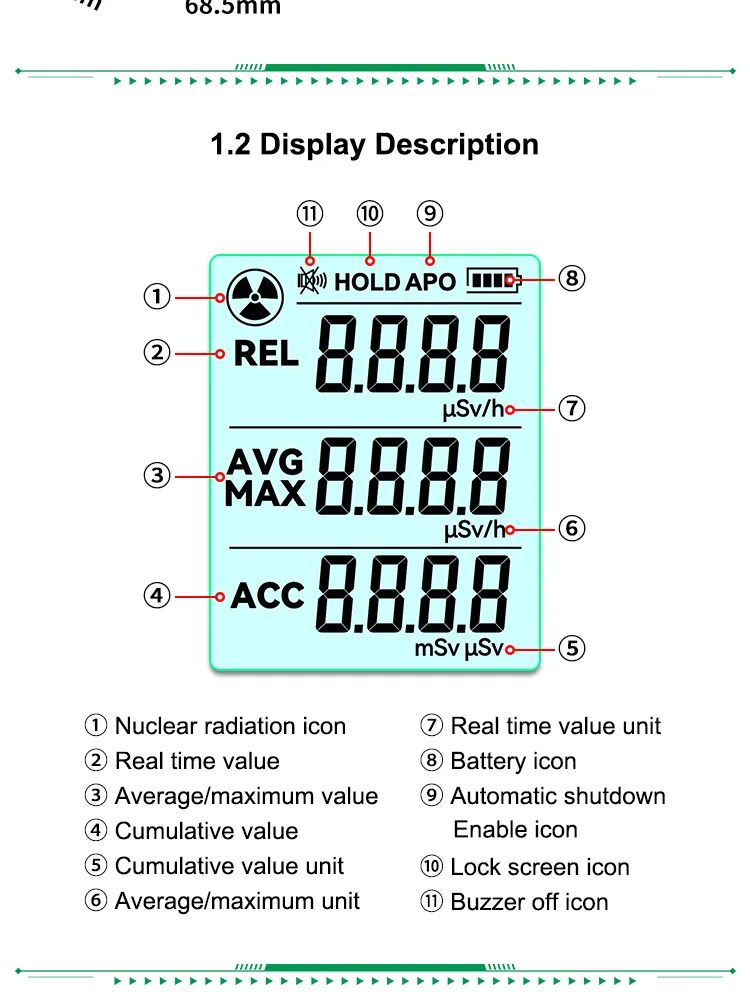
Login data averaging and driving the display, the GM tube works on the principle of gas amplification and incoming radiation ionizes some of the inert detector gas, resulting in enough free electron and a positively charged ion. The electric field inside the tube attracts the charged ion to the outer cathode while the electron is attracted towards the central anode as the electron approaches the anode, the electric field it encounters grows in strength, so that the accelerating force increases near the anode. The acceleration is such that the electron has enough energy to either excite the electrons in other atoms of the detector gas, or to ionize them completely. Excited electrons quickly decay releasing photons that can trigger ionization farther along the tube, while electrons free by ionization, can go on to cause further ionization leading to an exponential growth. This is often referred to as the avalanche effect. The charge migration in the tube leads to a reduction in the potential of the anode and an increase in the potential of the cathode. Either of which may be detected as a signal by the radiation detection device counter electronics as the negative charge around the anode increases, the effective electric field. This is reduced and eventually this reduction is such that further Avalanches are not possible and the tube can no longer detect radiation.
This state persists until sufficient electrons have recombined at the anode and positive gas ions recombined at the cathode, so that the field is recovered enough in strength, to trigger another Avalanche. This is the so-called dead time of the detector, the time after a detection that, the counter is insensitive to. Further events and its existence means that the detected count rate must be corrected to give the actual count rate after the dead time. Further detections are possible but with reduced signal strength, the total time that elapses before the full strength signal is produced by a subsequent event is called the recovery time.
Summing Up The Many Ways To Detect Radiation With Your Radiation Detector
The recombination of positive detection gas ions at the cathode in a radiation detector may be problematic as the ions may be neutralized in an excited state or may dislodge electrons from the cathode when in an excited state the atom will eventually decay to the ground state by emitting a photon both these photons and dislodged electrons may be capable of causing re-ionization of the gas triggering another Avalanche, so that a single detection event could lead to a continuous discharge to prevent this, a quenching mechanism is used. The question may be electronic, so that the electric field is removed for a short period of time following an event to prevent further discharge or may be inherent in the design by mixing quenching gases, with the detection gas. Such quenching gases are designed to be easier to ionize than the detection gas, so that during migration to the cathode the detection gas is neutralized by the quenching gas which then becomes the positive ion and migrate into the cathode when the charged quenching gas ion recombines at the cathode, it does so in the ground state so that further avalanche discharge is avoided. The most effective quenching gases are organic compounds, but these are dissociated irreversibly during the quenching which gives the tuber limited operating lifetime.
An alternative is to use a halogen gas which is recovered in full at the cathode so avoiding this removal of the quenching gas. The raw output from a GM tube shows a fraction of the radiation counts per second which is modified by taking account of the dead time, to give the actual counts per second if the radiation type and energy are known, then the counts per second reading may be calibrated so that the unit gives an equivalent dose rate. This is not the best method for dose determination from an unknown source as in the GM tube. The signal pulse height is relatively insensitive to the incident radiation energy on type so that the energy deposited is difficult to determine the use of counts per second or dose rate will depend to a large extent on the circumstances of use in both modes. Radiation is being detected in the former the activity is displayed while in the latter a conversion is made to indicate the energy deposition rate for widespread contamination of an area via radioactive material. The energy reach in the GM tube will be small as the inverse square law of distance and transit absorption will remove orbital fraction of incident particles.
However the radiation from the contamination will be measurable as an increase in the background radiation count level, which can easily be expressed in terms of an increase in the number of counts per second as a practical radiation detection device. A GM tube is not considered a natural choice for measuring radiation produced by a pulse device. The reason is that if the dead time is longer than the pulse-width duration, the detector will only pick up a single event rather than a full bunch worth of electrons or photons and the tube will count the pulses, not the radiation leading to an underestimation of those. If the dead time is significantly longer than the bunch frequency, and the radiation detector will counter only a fraction of the bunches leading to a furthering on of the reading, if the operating characteristics of the GM tube, when the linac are known. These effects may be compensated for so that a GM tube could be used. This will mean however that a different detection method has been used to initially calibrate the data. Radiation detection companies will almost always, need to employ the same radiation tester methods as described above. And always remember that a radiation meter exploits the natural process of ionization to detect and measure radiation in the radiation detector, and that Geiger counters are an invaluable tool for evaluating a potential source of radioactivity.
